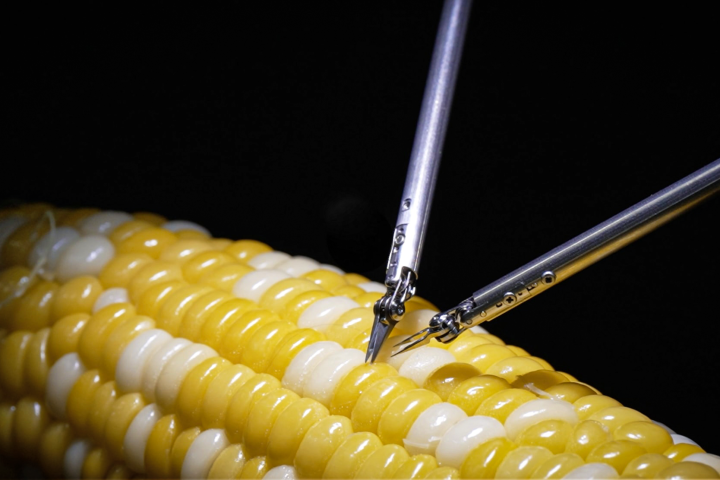The Nexus 6 and iPhone 6 Plus are two of our three favorite phablets of the year (along with the Galaxy Note 4). We have both in house right now, so why not take a quick look at how the two size up?
If you wear skinny jeans, then you can stop right now. Both of these phones are massive, and will take up plenty of space in both hand and pocket. The Nexus 6 is a little bigger: 1 percent taller and 6 percent wider.
The Nexus 6 is technically 42 percent thicker, but we wouldn't worry too much about that. Its 10.1 mm (0.4-in) depth only counts the thickest point of its curved back (its edges are much thinner). It isn't razor-thin (or uniformly thin) like the iPhone, but the Nexus 6 doesn't feel unusually thick either.

The iPhone 6 Plus is 7 percent lighter than the Nexus, but this also isn't reason to choose the iPhone.
... that's because, despite minor size and weight advantages for the iPhone, the Nexus gives you an 18 percent bigger screen. It also makes more economical use of its front face, with significantly smaller bezels above and below the 6-in screen:
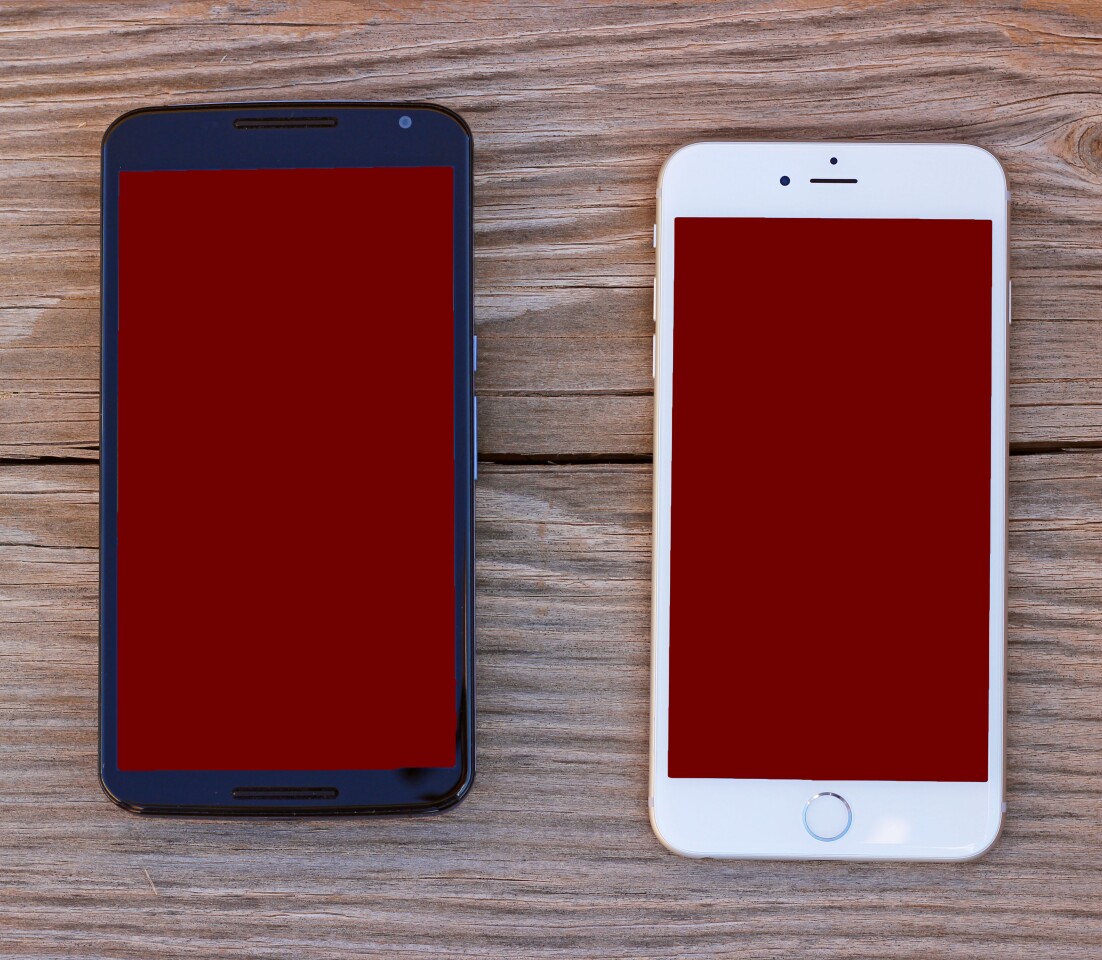
Make no mistake: the iPhone 6 Plus' screen is still enormous, and probably more than big enough for most smartphone shoppers. But the Nexus 6 takes it farther; it's a bit more like a small tablet, a bit less like a huge phone.
One minor gripe with the iPhone 6 Plus is the way developers have approached it. When it launched, we were hoping third-party app-makers would follow Apple's lead and make 6 Plus apps a bit more iPad-like (for example, Apple used multiple panels in the iOS Mail app and its home screen rotates like an iPad). But, for the most part, third-party apps are exactly like they are on the smaller iPhone 6, just bigger.

Android apps on the Nexus 6 are in pretty much the same boat (Flipboard, for example, is a key app that would be great in landscape on either device, but is stuck in portrait on both). The only reason we aim this nitpick at the iPhone is that Apple appeared to be setting the tone with its own software.
Both phones have excellent screen quality. The Nexus 6's Quad HD display is about 23 percent sharper than the iPhone's 1080p, but there's really nothing to complain about with either display. We consider the Nexus' denser pixels to be a nice bonus, not a deciding factor.
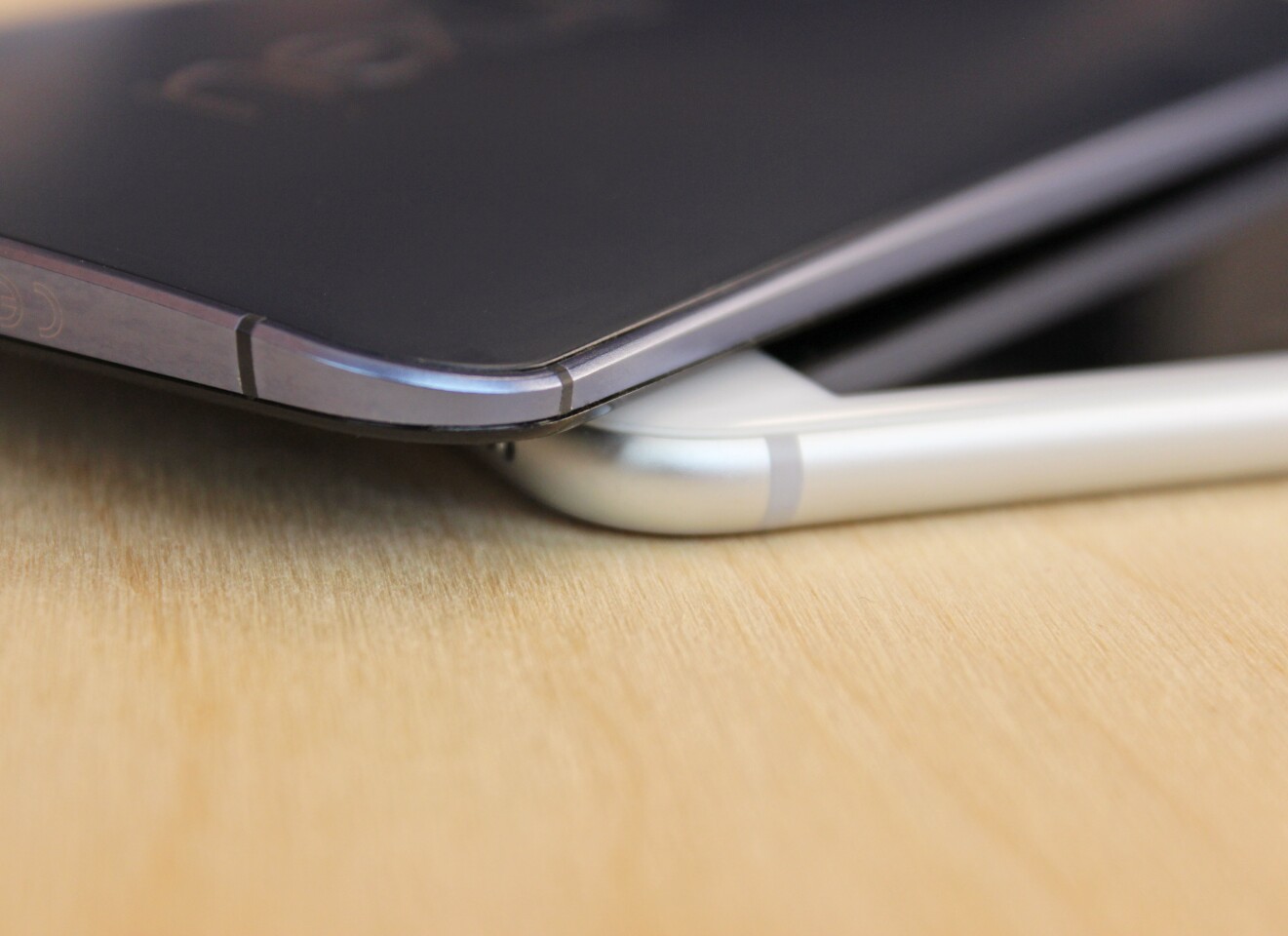
The iPhone has a higher-end build quality, with its full aluminum body. The Nexus 6 has a metal edge, but its back is made of an almost metallic-feeling plastic. We're content with the Nexus' construction (it's basically a big 2nd-gen Moto X), but the iPhone does have the tighter design and more premium materials.
We don't have any huge complaints about the Nexus 6's camera, but the iPhone is the better choice for photography. In our tests, it was slightly better in low-lit conditions and in the same ballpark for flash photography (both phones have dual LED flashes, to help even out and saturate flash shots). Like every other high-end flagship, both phones take terrific shots in well-lit outdoor settings.
The iPhone 6 Plus camera's biggest advantage is that it's faster. Sometimes by a wide margin. We can go from locked screen to having snapped a shot on the iPhone in as little as 3.5 seconds. On the Nexus, that process is inching up to 6 or 7 seconds. Sometimes auto-focus alone on the Nexus can take 3 or 4 seconds, leading to some frustrating missed moments.

Nexus phones have never been known for their cutting-edge cameras, and the Nexus 6 is still much better in this department than the Nexus 5 was. But it still trails the iPhone slightly in picture quality and a bit more than that in convenience.
Battery life is basically a draw. In our benchmark (we stream video over Wi-Fi with brightness set at 75 percent), both phones' batteries dropped around 12 percent per hour. 8+ hours of video streaming should translate to (easily) all-day battery life for most people, under "regular" use.
Charging, however, is an advantage for the Nexus 6. It uses Qualcomm's Quick Charge 2.0 technology, which can give you about 6 hours of extra battery life out of just 15 minutes of charging. That only applies, though, when its tank is almost empty; the more juice you have left, the less of a boost you'll see.
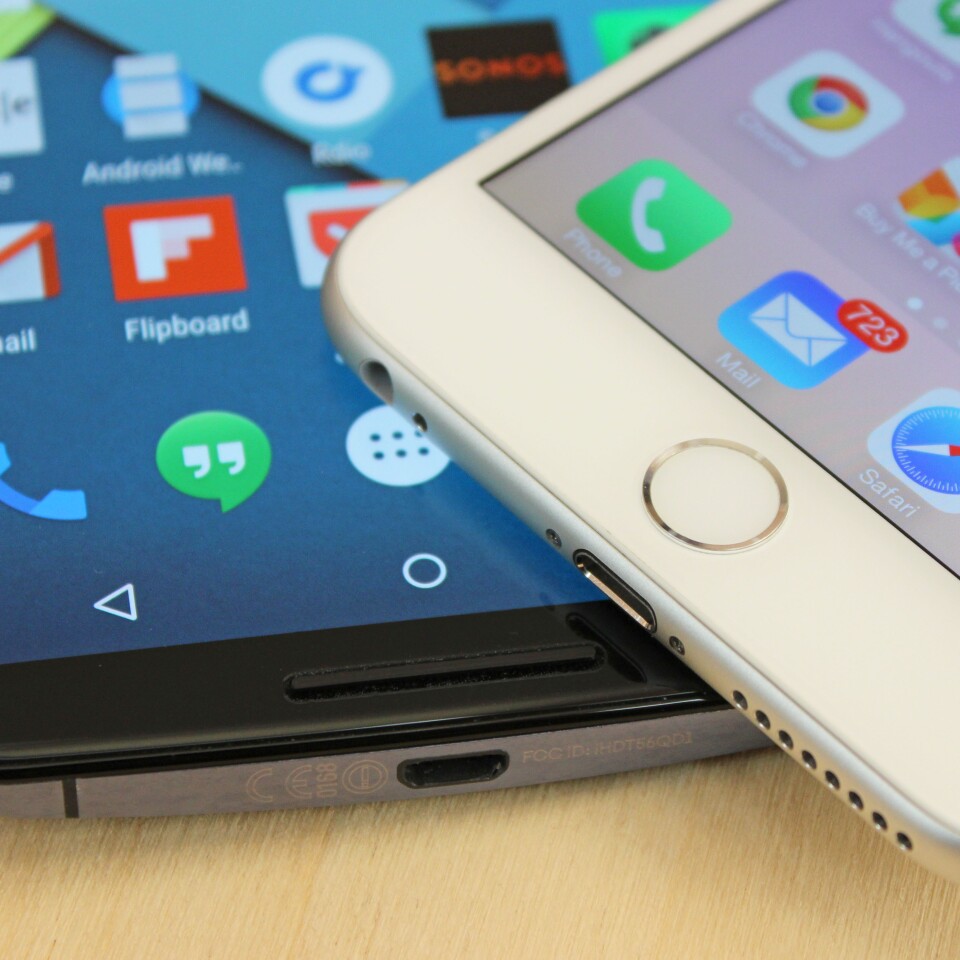
Like all 2014 iOS devices, the iPhone 6 Plus has Apple's Touch ID fingerprint sensor onboard. It lets you easily secure your phone, but you can also use it with compatible third-party apps (password managers are an especially great fit). And unlike Samsung's fingerprint sensors, which require a swipe from one angle, Touch ID just requires a quick touch – from any angle.
The Nexus 6 doesn't have a fingerprint sensor.
Google has been using the Nexus 6's front-facing stereo speakers in its marketing materials, and hey, they don't sound half-bad. But we also wouldn't recommend basing your decision on this. When playing video on the two phones side-by-side, I didn't notice much (if any) of an audio advantage for the Nexus (the iPhone's speakers aren't front-facing, but still sound decent). And neither phone's speakers sound nearly as loud and crisp as those on the HTC One (M8).
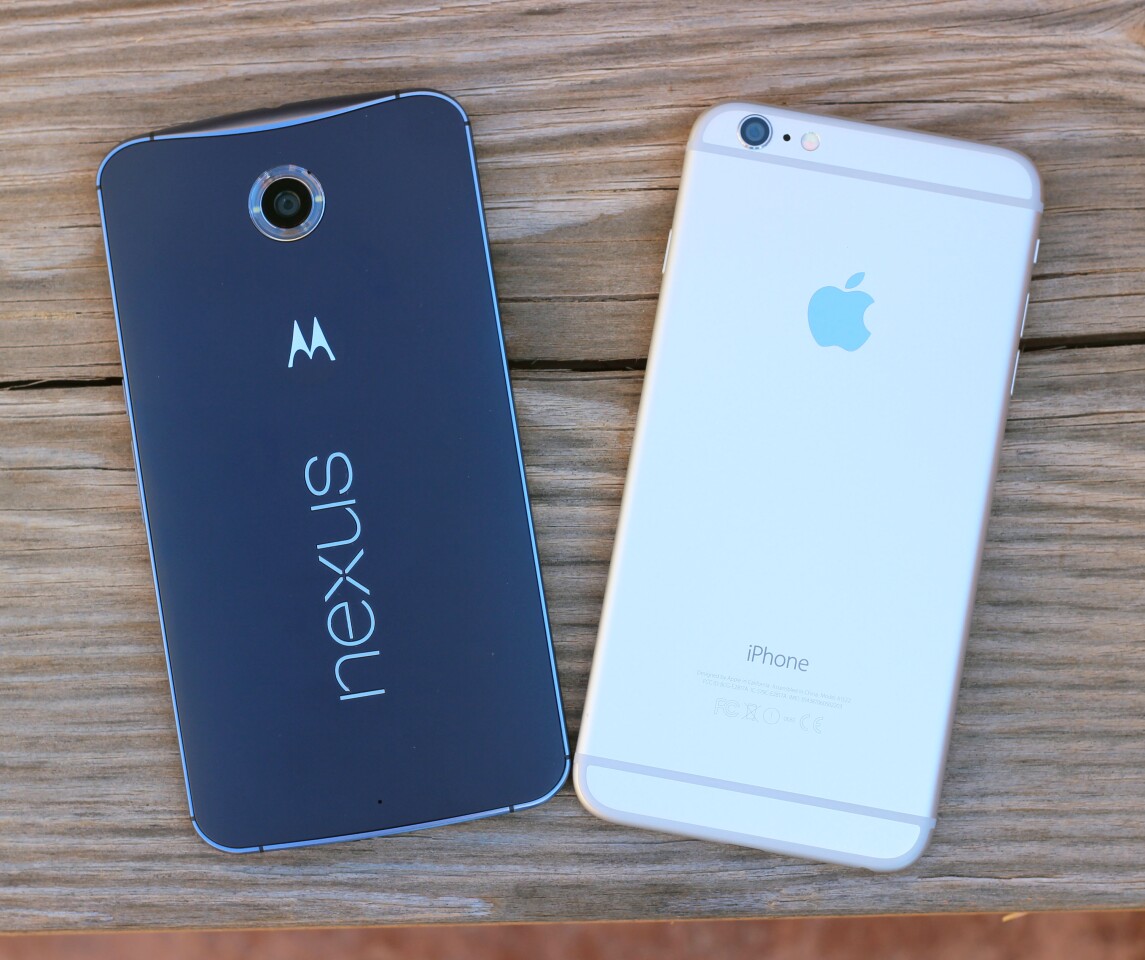
We aren't here to tell you which phone you should buy, but hopefully this side-by-side look helps you figure out which phone is better for you. The Cliff's Notes version is that the Nexus 6 gives you a more tablet-like experience, with its bigger screen and only slightly bigger size, but the iPhone's faster and better camera make it the better choice for photography. You can consider the iPhone's fingerprint sensor and premium build, along with the Nexus' sharper screen and quick charging, as wild cards that could sway you one way or the other.
... and of course software is always key. For that, we refer you to our full review of Android 5.0 Lollipop (Nexus) and our coverage of iOS 8 (iPhone).
If I personally had to pick one, I'd probably give the slight edge to the Nexus. I'm a visual person and screen size and quality are always big for me. The Nexus' screen is so big that it's like a phone, e-reader and tablet rolled into one. You could say the same thing about the iPhone, but the Nexus just pushes it a little farther.
Both phones are available now. The Nexus 6 can save you a little money: it's US$100 cheaper at full retail, and $50 cheaper with a contract. The entry-level Nexus also gives you double the storage of the cheapest iPhone 6 Plus (32 GB vs. 16 GB).
For more on these two, you can thumb through our image gallery, and get deeper dives from Gizmag's full reviews of the Nexus 6 and iPhone 6 Plus.













































